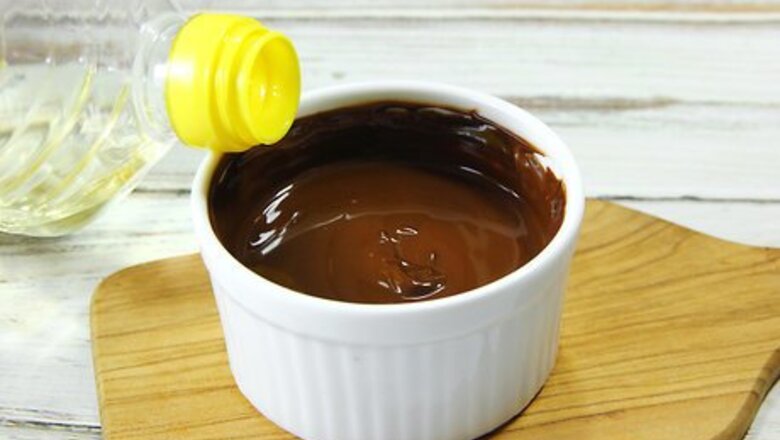
views
Thinning Chocolate

Add oil, butter, or shortening to thin a small amount of chocolate. The best way to thin chocolate is with the addition of oil. The exact amount of oil you will need will depend on the thickness of your chocolate and your desired consistency. Start by stirring in just a little splash, then add more if you need to. Use an unflavored oil so you don't alter the taste of your dessert. Coconut and canola oils work nicely for this, and coconut oil in particular has a pleasing texture on the palate. This will work best if you add the oil to the chocolate before you heat it. However, you can add it afterwards if you need to.
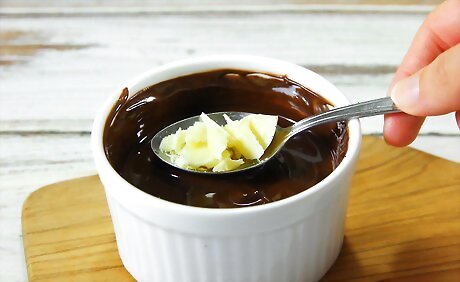
Add Paramount Crystals if you need to thin a lot of chocolate. Paramount Crystals are made of vegetable oils, and they’re popular with professional bakers because they’re effective and easy to use. If you’ve never used them before, start with a tiny bit and add more as needed. Try adding about 1 teaspoon (4.9 mL) of Paramount Crystals for every 1 cup (240 mL) of chocolate.
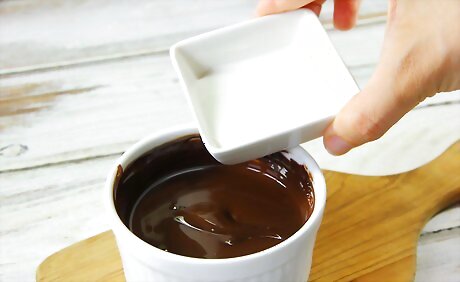
Pour in a little warm milk for a creamier chocolate. Because milk has a high fat content, it blends better into chocolate than water does. Start with about a capful of milk, then add more if needed. Just make sure you heat up the milk to about the same temperature as the chocolate before you add it, or else the chocolate will seize. Any milk will work, but whole milk will give you the richest result. You can also add warm cream to the chocolate for an even richer texture.
Avoiding Common Mistakes

Heat your chocolate slowly so it doesn’t become too thick. Overheating chocolate will make it very thick and hard to work with. To get the perfect texture, take your time as you melt the chocolate, and watch it carefully throughout the entire process. If you have a candy thermometer, make sure the chocolate does not exceed 115 °F (46 °C), or 110 °F (43 °C) if you are using milk or white chocolates, which are more heat-sensitive.
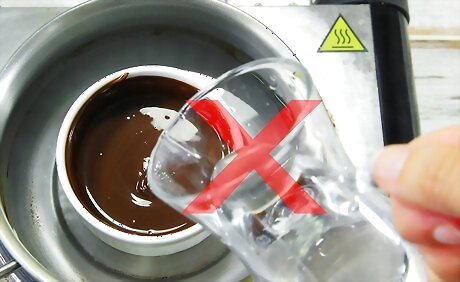
Do not add water to your chocolate. Water causes chocolate to seize, or to thicken into a lumpy paste. Make sure your bowls and utensils are dry before you begin working with the chocolate, and do not add water in an attempt to thin out the chocolate. If a little water does accidentally get into your chocolate, adding more water can actually reverse the seizing process. Add 1 US tbsp (15 mL) of boiling water at a time, stirring vigorously after each addition. However, this will change the texture of your chocolate.
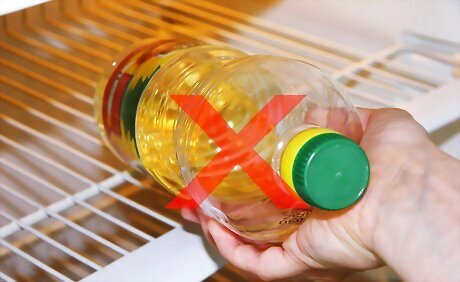
Don’t add cold ingredients to your chocolate. Adding cold butter or oil can also cause your chocolate to seize. This is because the sugars cling together and separate from the fat when they cool too quickly, leading to a clumpy mess. Chilling your chocolate too quickly can also cause it to seize. Don’t pour your chocolate into a cold bowl or use cold ingredients, and allow it to cool to room temperature before you place it into the refrigerator or freezer.




















Comments
0 comment